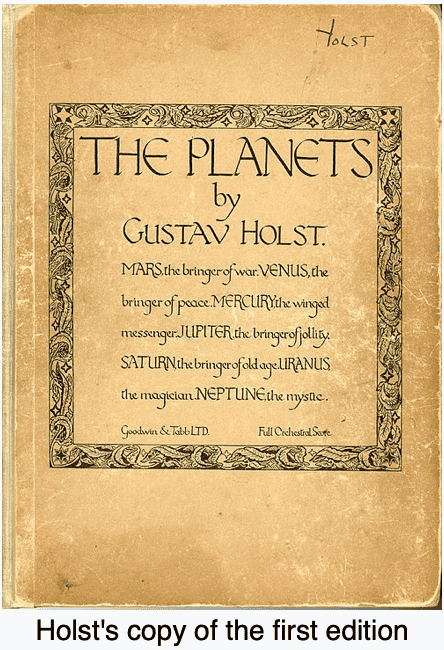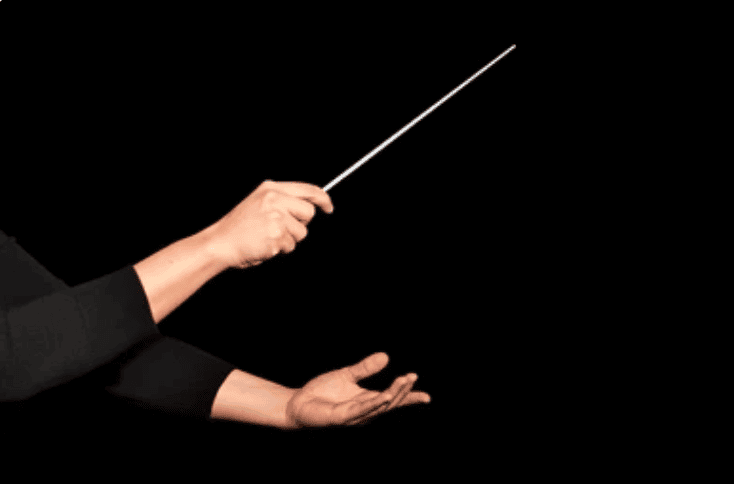The First Woman selected as conductor of the Seattle Symphony cannot be seen as she progresses through the standing members of the orchestra that crowd the stage. At just over 5’ tall, she comes into view only when she shakes hands with the concertmaster and steps up on her podium.

Although it is a rehearsal, there is an appreciative audience and Zhang graciously acknowledges them. She turns toward the orchestra, a large audiovisual screen in the background. For this rehearsal of Holst’s The Planets, she tells the audience, they will play the movements in reverse order of how many instruments are playing, so that those who are not needed in every movement can leave early. They begin with “Mercury” and she holds approximately 100 instrumentalists in her hands, plus a chorus and organ. Her hands float through space, as the screen undulates with photos of the planet. Her baton soars on top of arpeggios as if tapping the air toward the instruments. “Mars” follows and her body language changes. She weaves back and forth as if dodging arrows while the images on the screen above her subdivide and multiply. In “Jupiter” the conductor holds sway over the world.
Zhang is a guest conductor on this occasion as she will not assume her conductor role until Fall of 2025. A conductor with international credits, she has come a long distance from her birth during the Cultural Revolution in China in 1973. She started her piano lessons with her mother when she was three, on an instrument built by her father. At age 11, she studied at the Central Conservatory of Music in Beijing, earning bachelor’s and master’s degrees. She was already studying conducting with Professor Wu Lingfen, a woman conductor. At age 20, she debuted at the Central Opera House in Beijing.
In 1988 Zhang came to the United States and studied at the University of Cincinnati’s Conservatory of Music, earning a Doctor of Musical Arts. She was the youngest woman to conduct the Conservatory’s Concert Orchestra.
Zhang has an impressive list of firsts. She was:
–The first person awarded the Arturo Toscanini Associate Conductor’s Chair, after serving as cover conductor for the New York Philharmonic from 2002 to 2004;
–The First Woman conductor to play with the Staatskapelle Dresden in 2008;
–The First Woman conductor of a major Italian symphony orchestra when she was music director of the Orchestra Sinfonica di Milano Giuseppe Verdi in 2009;
–The First Woman conductor of the New Jersey Symphony Orchestra, in 2015, after serving as guest conductor for several years;
–The First Woman principal guest conductor for the BBC, in 2015, when she led the BBC National Orchestra of Wales;
In September, 2025, she will claim another first, as the First Woman conductor of the Seattle Symphony. She has received several awards, and The Philadelphia Orchestra, under her baton, won Grammys in 2023.
If Zhang’s work with the Seattle Symphony for this guest concert is any indication, an audience member watching her rehearse can believe she is collaborative. She uses the term “we” often. “Do you think we could have a quicker crescendo in this measure?” She is also attentive to detail. After one movement, she refers back to a particular measure in which “one” of the horns had played a B that should have been a B-flat. Out of all the musicians on that stage, she heard that errant note.
It is not unusual for a First Woman to have more than one first. What distinguishes Xian Zhang is that she did this internationally. It seems fitting that she shares her name with a Chinese deity and a Chinese poet from almost one thousand years ago.
For more about Xian Zhang and her artistry, see her webpage
See The Conductor: With living First Women it can be difficult to find a photo that does not require prior permission for use. For a stunning photo of this artist, click on the first mention of the Seattle Symphony at the beginning of this article.

